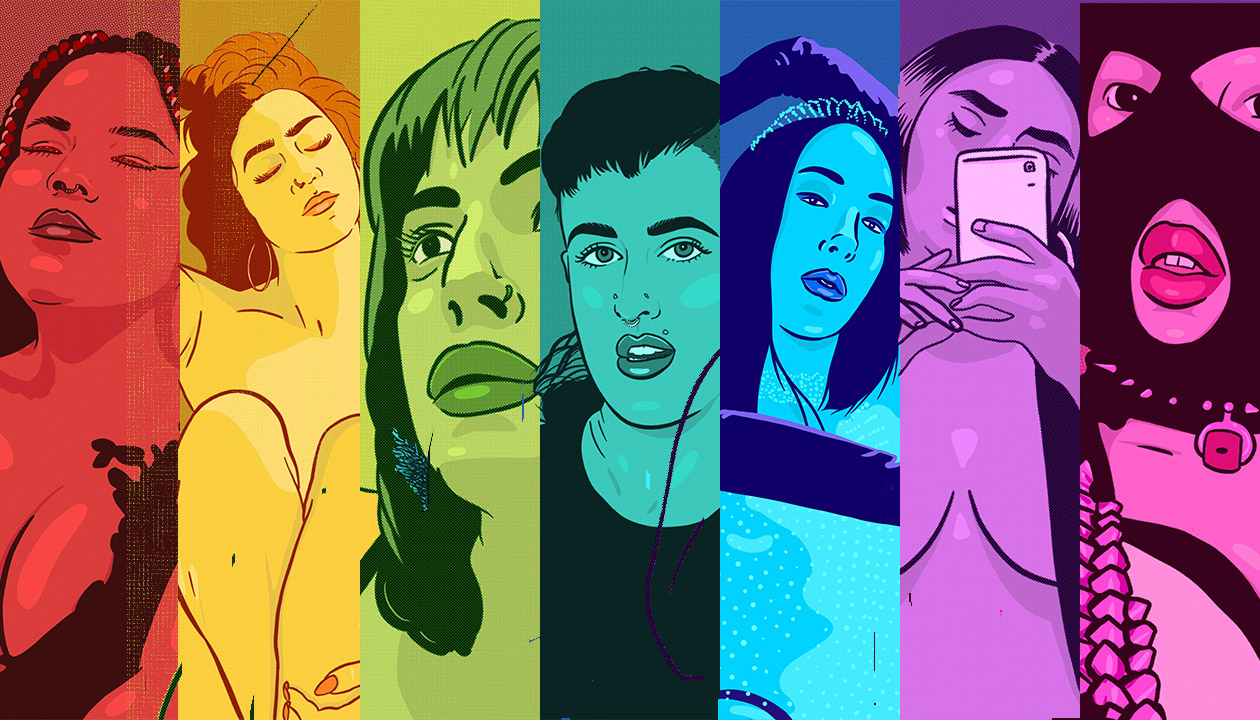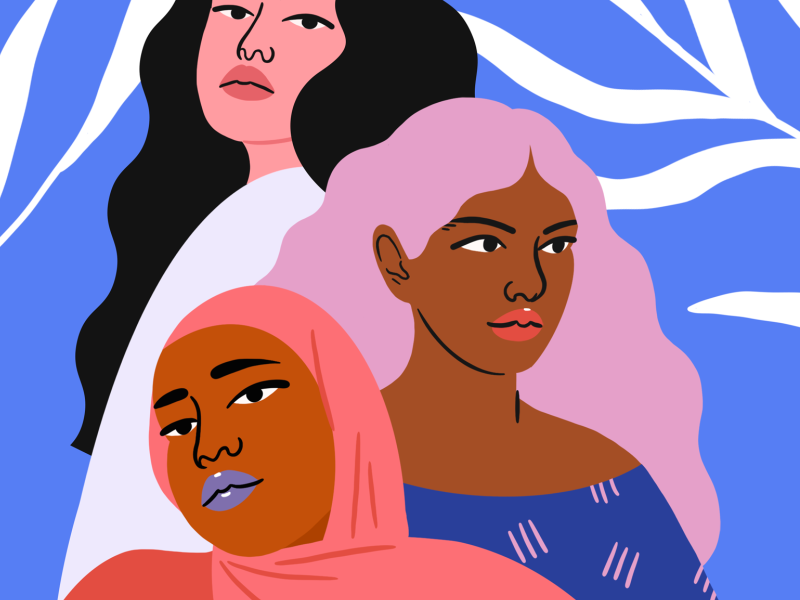
Through traveling to other people’s “worlds” we discover that there are “worlds” in which those who are victims of oppressive and stereotypical perception are the real subjects.
The problem of discrimination exists in all the forms and violates basic human rights of individuals subjecting them to public scrutiny and prejudice. The basic fundamental rights of equality, dignity and freedom from all kinds of discrimination is enshrined in Universal Declaration of Human Rights as well as are guaranteed by the Indian Constitution. The concept of intersectionality comes into the picture, when an individual from minority group has to navigate the main crossroad in the city. The main crossing refers to the typical, prejudiced, patriarchal and prevailing racist road or crossover.
The intersectionality and human rights law is the methodology of both action-oriented form of practice and observation which focuses to uncover and address the workings. The victims of discrimination do not only deal with one form of oppression but suffers a multi-layered blanket of oppression at the inter-junctions in various aspects including race, gender and sexual orientation.
Discrimination at the Intersection

The practice of discrimination at the intersection of race, gender and sexual orientation continues to exist in varied forms and has hampered the growth of the individual as well as the nation as a whole. The traditional approaches of addressing discrimination laid more emphasis on specific communities with different ethnic backgrounds, sexual orientations, race or gender.
However, the individual facing discrimination may not only be subjected for a certain prejudice but is often subjected to varied and endless dimensions of discrimination as given that their multitude identities interact with one another making people from marginalised communities face prejudice which is often aggravated. For instance, prejudice against a black transgender woman could stem from her gender identity, racism, and transphobia all at the same time.
The same-sex couples are discriminated due to existing social stigmas, conservative and narrow-minded mindset of the people. They are denied a broad range of basic and fundamental human rights, other benefits and protections that are given to all other individuals as well as to other couples. The right to marry is the most intrinsic and crucial right for all the same-sex couples as it forms the basis for some of the other human rights like a couple could live together, raise their offsprings together, operate as a married couple, share their working and bank details and have the fear to lose all these rights in an instant.
If either of the partner is ill or hospitalized, the other half may have no legal help or right to visit if they are not married. In certain extreme situations, if a partner is incapacitated and is in vulnerable situation, the other may feel helpless due to denial of any role in treatment decisions due to legal obligations.
Similarly, the same dilemma arises in situations of right to survivor or insurance benefits. They are also denied of right to have custody, visitation, no obligation of support or involvement in child rearing. In the landmark case of Navtej Singh Johar v. Union of India, the Supreme Court ruled that the fundamental essence of an individual’s identity is rooted in their ability and liberty to choose their own sexual orientation and gender expression, including clothing, language, posture, and other behavioural facets. This ruling foster outcome that stimulates constructive social transformations and solidify professionalism.
The Supreme Court of India in its judgment of National Legal Services Authority (NALSA) v. Union of India, in the year 2014 addressed the concept of discrimination against gender minorities and stated that “discrimination on the grounds of sex” constitutes discrimination based on sexual orientation and gender identity in accordance to the Indian Constitution. The apex court in 2016 recognized that individuals have the ability, right and freedom to choose a self-defined sexual orientation and gender expression.
On the lines of the NALSA judgment, the Indian parliament passed The Transgender Persons (Protection of Rights) Act, 2019. The act facilitated the right to register and receive a certificate of identity as a proof of recognition from the District Magistrate. The act places an obligation on the legislation through its different provisions to enact welfare measures, schemes, programmes towards education, social security and healthcare. It also protects transgender people in the workplace as well as other social spheres by strictly implementing and establishing that no person/ individual shall discriminate against a transgender person.
What legal recourse do you have?

India’s legal system aims to protect and is continuously growing each day, embracing minorities within its fold and eliminating all gaps in cultural, social, economic or political spheres and its comprehension. Individuals that are marginalized in society or any other institution and face discrimination across different sectors are considered as gender or sexual minorities and are denied of equal opportunities in the job, living or in other related aspects. Every citizen is guaranteed equality under Article 14 of the Indian Constitution, as well as the right to practice trade or business, profess any religion or to reside in any part of the country through the fundamental rights enshrined in the Indian Constitution.
The Equal Remuneration Act of 1976, ensures equal pay to all the workers irrespective of their gender, race, ethnicity or sexual orientation. The principle of pay parity and equal opportunity is promoted and implemented in all the spheres including hiring, promoting, training, and other procedures and circumstances. In order for the appropriate authorities to audit their wage records, employers must keep track of all employee wages in records and registers.
For the protection of female employees, The Sexual Harassment of Women at Workplace (Prevention, Prohibition, and Redressal) Act came into effect in 2013. It lays out the employer’s obligations to form an internal committee to handle sexual harassment complaints in a prompt and confidential manner, as well as to periodically educate staff members on the subject. The Companies Act, containing a provision to boost the ratio of women in executive leadership positions inside the business, came into effect the same year. The Act mandated the board to have an initial requirement of one female director.
The concept of equality irrespective of caste, colour, creed, sexual orientation or gender also promotes just and fair workplace opportunities. A global initiative through a series of agreements and suggestions, international organizations such as the International Labour Organization (ILO) have taken measures to combat gender discrimination at work through an Equal Remuneration Convention and the Convention on Discrimination (Employment and Occupation, 1958). The promotion of gender equality is included in the definition of “responsible business conduct” in the ILO MNE (Multi-National Enterprises) Declaration.
The Sustainable Development Goals (SDGs) of the United Nations constitutes a crucial and constructive tool in enforcing gender equality. The SDGs 4, 5, 8, and 10 are pertinent targets that focuses on advancing gender parity and end discrimination to promote equality and equity among masses through fundamental rights. They seek to achieve gender equality and the empowerment of all women and girls; they seek to ensure inclusive and equitable quality education and to promote opportunities for lifelong learning for all. They also seek to promote and facilitate sustained, inclusive, and sustainable economic growth, full and productive employment, and equitable work environment for all without any discrimination based on individual preferences or any other external factors.
Conclusion
According to the Indian Constitution, each and every individual irrespective of their race, gender, sexual orientation, caste, creed or colour has the right to live life with dignity, integrity with equal access to workplace opportunities without any discrimination based on existing social prejudices and social stigmas. Everyone must be equal in the eyes of law and judiciary being the guardian of the Indian Constitution condemns several discriminations experienced by the minority groups at the intersection of race, gender and sexual orientation.
The policy makers must aim at creating a gender diverse and inclusive work environment as well as a society where individuals are given respect and love irrespective of psychological barriers. The study also believes that an inclusive and diverse environment would give proper recognition to the high-spirited professionalism and talent of the individuals irrespective of their sexual orientation, race, caste, colour, creed, gender, family backgrounds or individual preferences.
References
- Lugones, M., quoted in Kapur, R., “The Tragedy of Victimization Rhetoric: Resurrecting the ‘Native’ Subject in International Post-Colonial Feminist Legal Politics”, Harvard Human Rights Journal, Vol. 15, 2002, p. 1.
- Crenshaw, K., according to a report of the 2001 World Conference against Racism as cited in Yuval-Davis, N., “Intersectionality and Feminist Politics”, European Journal of Women’s Studies, Vol. 13, 2006, p. 196.
- Alphonso B. David, Fighting Discrimination Based on Sexual Orientation, 34 LITIG. 31 (2007).
- Navtej Singh Johar v. Union of India, (2018) 10 SCC 1.
- (2014) 5 SCC 438.
- Transgender Persons (Protection of Rights) Act, act no. 40, Acts of Parliament, 2019.
- The Equal Remuneration Act, act no. 25, Acts of Parliament, 1976.
- Sexual Harassment of Women at Workplace (Prevention, Prohibition, and Redressal) Act, act no. 14, Acts of Parliament, 2013.
Submitted by Bhavya Gupta, a Law Student pursuing B.B.A.LL.B. (Hons.) at Symbiosis Law School, Pune.